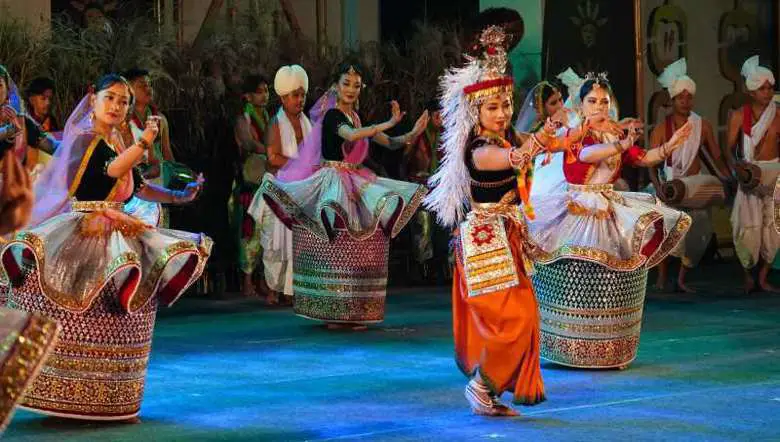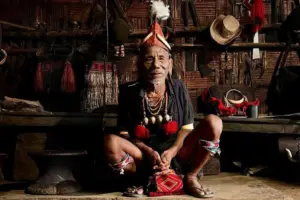The Meitei people, also known as the Manipuri community, are an enigmatic group with a rich history and vibrant cultural traditions. They are the major ethnic group in the northeastern Indian state of Manipur, which is located in the eastern part of the country. The Meitei people have a distinct identity and are known for their unique language, traditions, and way of life.
In this article, we will delve into the fascinating world of the Meitei people, exploring their historical background, cultural diversity, language, festivals, arts, famous personalities, culinary traditions, and the tourism potential of Manipur.
Historical background of the Manipuri community
The history of the Meitei people is deeply intertwined with the history of Manipur. The Manipuri kingdom, also known as Kangleipak, was established around the 1st century AD and flourished for centuries. The Meitei people have a rich cultural heritage that reflects their connection with the ancient kingdom. They have a long and storied history of conflict and resistance against foreign invasions, particularly during the British rule in India.
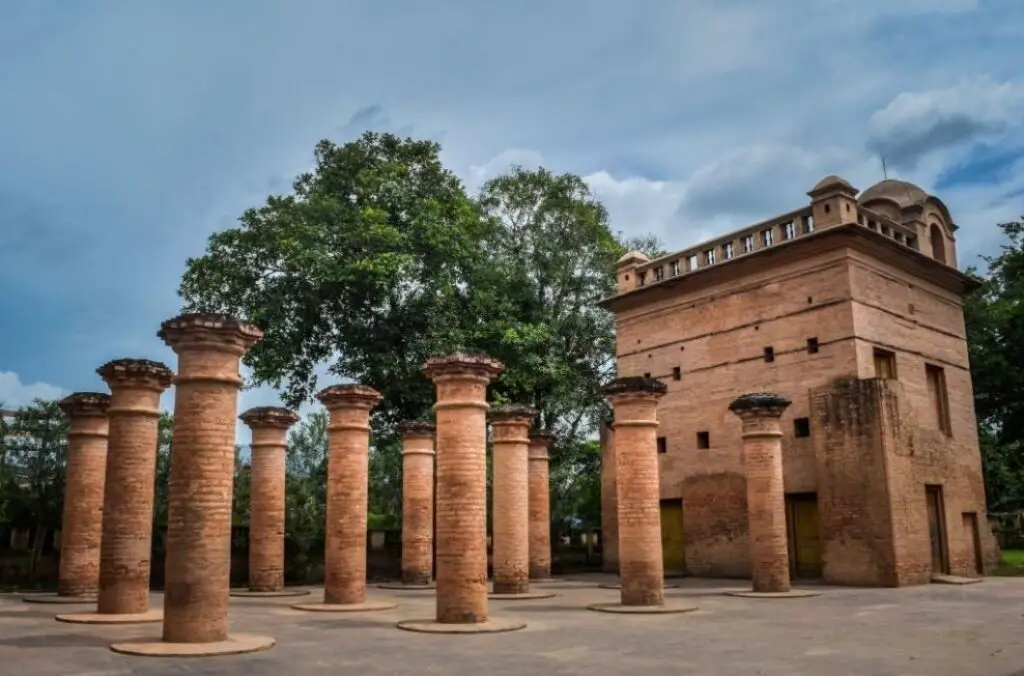
The Meitei people have preserved their cultural identity and traditions throughout history, despite the challenges they have faced. They have a deep sense of pride in their heritage and have managed to maintain a distinct cultural identity that sets them apart from other communities in the region. The history of the Meitei people is a testament to their resilience and determination to preserve their unique way of life.
Cultural diversity and traditions of the Meitei people
The Meitei community is known for its rich cultural diversity and vibrant traditions. The Meitei people have a strong sense of community and place a great emphasis on family values and social harmony. They have a unique social structure that is based on kinship and hierarchy. The Meitei society is traditionally divided into clans, each with its own customs and traditions.
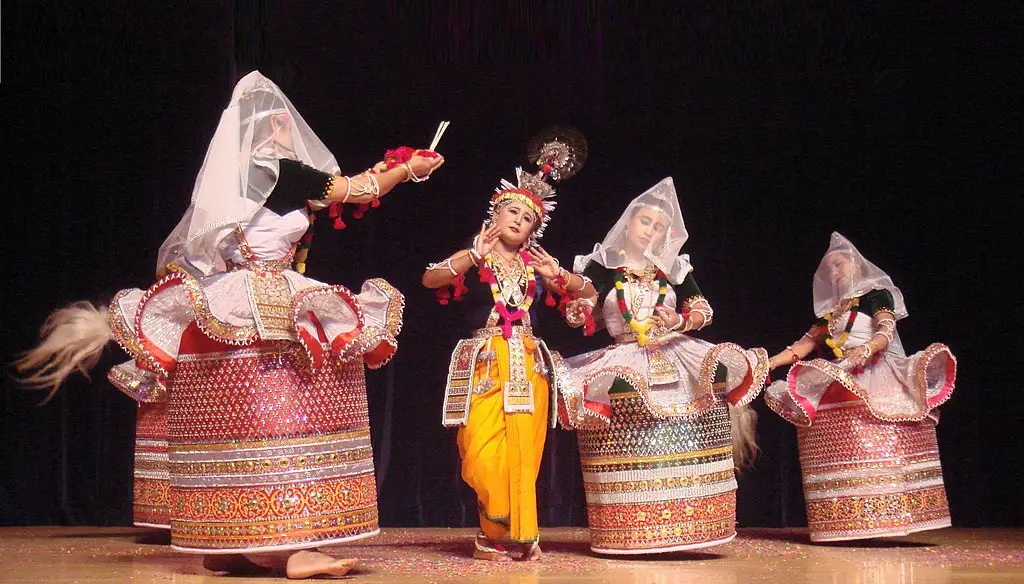
The Meitei people have a rich tradition of music, dance, and performing arts. They have several traditional dance forms, such as the Ras Lila and Thang-Ta, which are performed during festivals and special occasions. The Meitei community also has a rich tradition of storytelling and oral literature, with folktales and legends being passed down through generations.
Innaphi and Phanek are the primary traditional garments for Manipuri women, with the special Mayek Naibi Phanek featuring horizontal stripes for added beauty. Meitai females create the Kanap Phanek with diverse designs, while ‘Lai-Phi’ and ‘Chin-Phi’ represent other traditional costumes. Among men, the common white turban, Pagri, is prevalent. In the past, Khamen Chatpa was a gift for poets; today, it’s worn by the upper class. Modernization has led people to reserve traditional attire for festivals and rituals.
Significance of the Manipuri language
The Manipuri language, also known as Meiteilon, is an integral part of the Meitei culture and identity. It is one of the major languages spoken in the northeastern region of India. The Manipuri language has a rich history and is considered one of the oldest languages in the region. It has its unique script, known as the Meitei Mayek, which is still used today.
The Manipuri language plays a crucial role in preserving the cultural heritage of the Meitei people. It is the medium through which traditional stories, folk songs, and oral literature are passed down from one generation to another. The language is also a source of pride for the Meitei people, as it symbolizes their distinct identity and heritage.
Festivals and celebrations of the Meitei people

The Meitei community is known for its vibrant festivals and celebrations, which are an integral part of their cultural life. The festivals are a time for the community to come together, celebrate, and showcase their rich cultural heritage.
- Lai-Haraoba is a traditional festival celebrated by the Meitei community celebrated in the name of the deity called Umang Lai which takes place in May. The festival is characterized by a blend of rituals, dance, music, and theatrical performances. It is a time when the community comes together to express gratitude, seek blessings, and celebrate the continuity of their cultural heritage.
- Yaosang is a major festival in Manipur, and it shares similarities with the Hindu festival of Holi. It is celebrated with great enthusiasm and joy, typically in March. It marks the onset of spring. It is a time for joyous celebrations, with people participating in traditional dances, sports, and other cultural activities.
- Cheiraoba is the Manipuri New Year, and it is celebrated with much enthusiasm in the state of Manipur. The festival falls in April, marking the beginning of a new year according to the traditional Manipuri lunar calendar.
Dance
Dance is integral to Manipuri culture, offering a visual treat with its lyrical beauty and rhythm. King Khuyoi Tompok, a patron of art and culture, developed Manipuri Dance in the 2nd century AD. Vaishnavism’s introduction in the 15th century popularized Manipuri Dance.
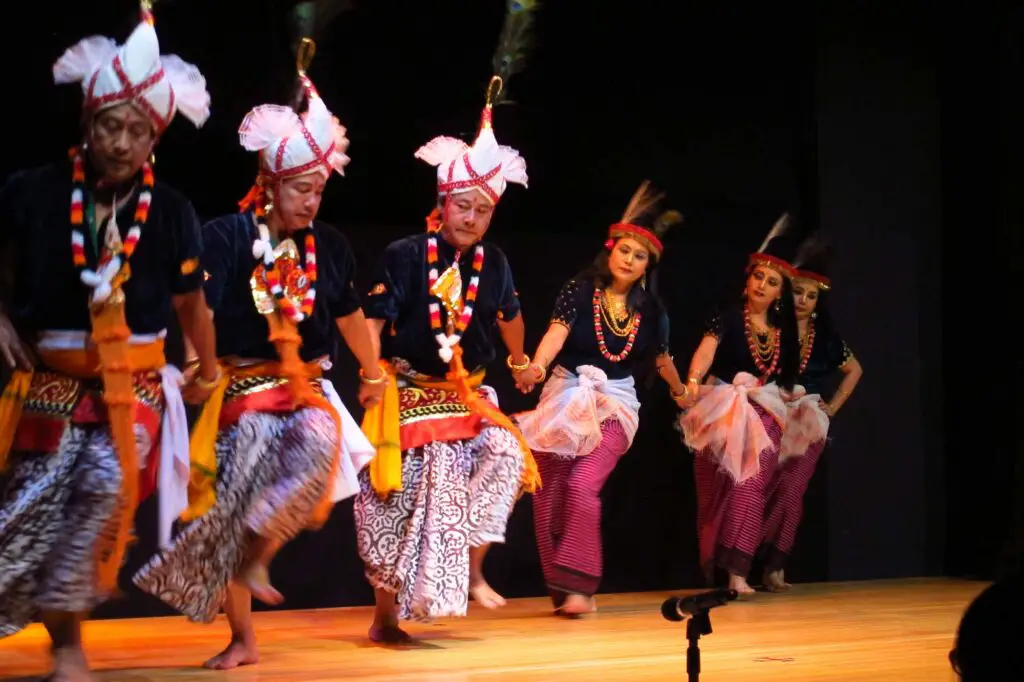
- Raas Lila, depicting the love story of Radha and Krishna, is the most famous dance form, performed at Shree Shree Govindjee temples and during Basanta Purnima, Kartik Purnima, and Sarada Purnima.
- Nupa Pala, or Kartal Cholom, a Cymbal Dance, serves as a prologue to Raas Lila, featuring male partners with cymbals and white turbans.
- Pung Cholom, a dance to invoke deities, is the soul of Manipuri Sankritana music.
- Maibi dance, part of the Lai-Haraoba festival, showcases Maibis depicting the lifestyle of Manipuri people.
- Khamba Thoibi dance, a duet dedicated to sylvan deities, portrays the Moirang episode with a hero (Khamba) and heroine (Thoibi).
Music
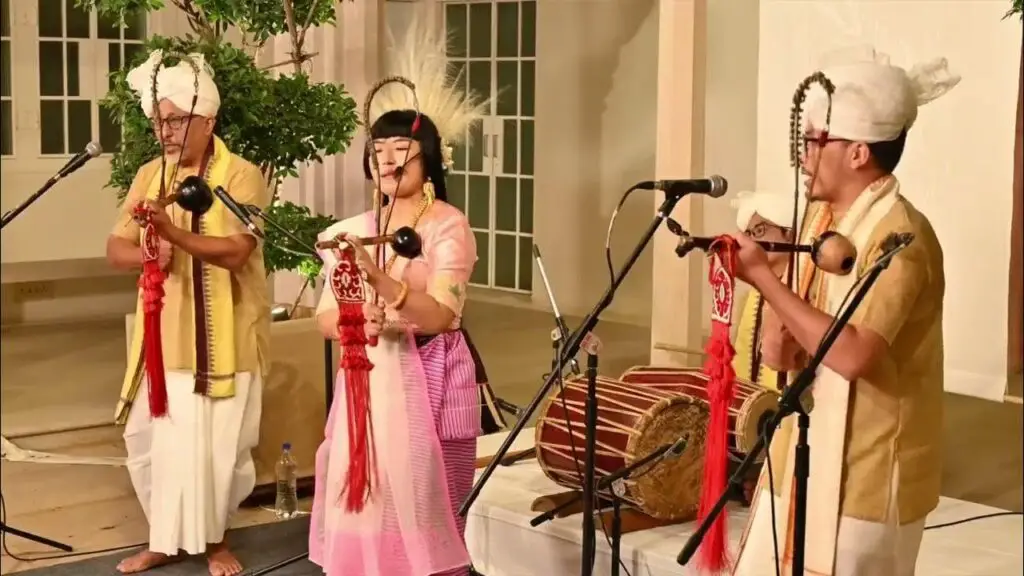
Meitei people have a deep fondness for music, particularly folk songs that dominate the region.
- Khullong Ishei, sung by Meities during activities like fishing, revolves around love, with singers adjusting lyrics to their tunes.
- Pena Ishei is another song form accompanied by the Pena musical instrument. It often narrates the love story of Khamba-Thoibi. The Pena, resembling a bamboo rod with a coconut shell, produces music by pressing the drum shell against the chest and rubbing the strings with a curved iron rod.
- Lai Haraoba Ishei is known for its erotic mysticism, sung during the ceremonial Lai-Haraoba occasion. Although covered with simple words, it carries a deeper meaning.
- Various famous songs in the region include Thoubal Chongba, Nat, Gaur Padas, Dhob, Napi Pala, Khubaishei, and Raslila songs, each contributing to the rich musical tapestry of Manipur.
Traditional arts and crafts of the Meitei people
The Meitei people have a rich tradition of arts and crafts, which are an integral part of their cultural heritage. They are known for their exquisite handloom textiles, particularly the famous Manipuri silk, which is renowned for its intricate designs and vibrant colors. The Meitei community is also skilled in pottery, wood carving, and traditional painting known as Pena.

The traditional arts and crafts of the Manipuri people are not only a means of livelihood but also a way of preserving their cultural heritage. The artisans pass down their skills and knowledge from one generation to another, ensuring the continuation of these traditional crafts.
- Kauna is a type of reed that is commonly found in the wetlands of Manipur, India. The scientific name of this reed is Scirpus grossus. It is widely used by the local communities for various traditional purposes, particularly in the making of mats, cushions, and other handicraft items.
- Pottery is an ancient and traditional craft in Manipur, reflecting the rich cultural heritage of the region. Manipuri pottery is known for its unique styles, vibrant colors, and intricate designs. Artisans in Manipur have been practicing pottery for generations, and it holds cultural significance in the daily lives and rituals of the local communities.
- Textile weaving, known as Laichamphi, is a significant and traditional craft practiced by women in Manipur. The state has a rich heritage of handloom weaving, and Laichamphi is an integral part of the cultural and economic life of the Manipuri people.
Cuisine and culinary traditions of the Meitei people

The Meitei community has a rich culinary tradition that is known for its unique flavors and ingredients. Manipuri cuisine is characterized by the use of aromatic herbs, local vegetables, and fermented fish, which add a distinct taste to their dishes. Some popular dishes include Eromba, a spicy fish stew, and Ngari, a fermented fish delicacy.
- Nga-thongba: Nga-thongba is a popular Manipuri fish curry. It is a savory dish made with fish, typically served with various side dishes and rice. The fish curry is often flavored with local herbs and spices, contributing to its unique taste.
- Ooti: Ooti is a traditional Manipuri dish made with bamboo shoots. It is a curry prepared with bamboo shoots, lentils, and various aromatic spices. Ooti is known for its distinct flavor and is commonly enjoyed with rice.
- Chagem Pomba: Chagem Pomba is another traditional Manipuri dish. It is a preparation made with fermented soybean, and the dish is known for its pungent flavor. The fermented soybean is typically cooked with various ingredients to create a flavorful and hearty dish.
- Kangshoi: Kangshoi is a traditional Manipuri stew that includes a variety of seasonal vegetables. It is a nutritious and wholesome dish, often prepared with leafy greens, roots, and other vegetables. Kangshoi is typically flavored with local herbs and spices.
- Lonchak: Lonchak is a type of bean, and it appears to be a favorite vegetable in Manipur. It is likely used in various culinary preparations, adding nutritional value and flavor to the dishes.
- Iromba: Iromba is a fermented delicacy that combines fish, vegetables, and bamboo shoots. The fermentation process imparts a unique taste to the dish. The combination of different ingredients creates a flavorful and often pungent dish that is enjoyed in Manipur.
- Ngari: Ngari is made by fermenting small freshwater fish, usually the Indian carp, with salt. The fermentation process can take several weeks, during which the fish transforms, developing a strong aroma and flavor. The resulting product, Ngari, is rich in umami and adds a unique taste to Manipuri dishes.
The Meitei people take great pride in their culinary traditions and food holds a special place in their culture. The community has a strong tradition of hospitality and sharing meals with friends and family is an important social ritual.
Tourism in Manipur: Exploring the Meitei heritage
Manipur, with its rich cultural heritage and natural beauty, has tremendous tourism potential. The state offers a unique opportunity to explore the Meitei heritage and experience the vibrant culture of the community. The capital city, Imphal, is home to several historical sites and museums that provide insights into the history and culture of the Meitei people.
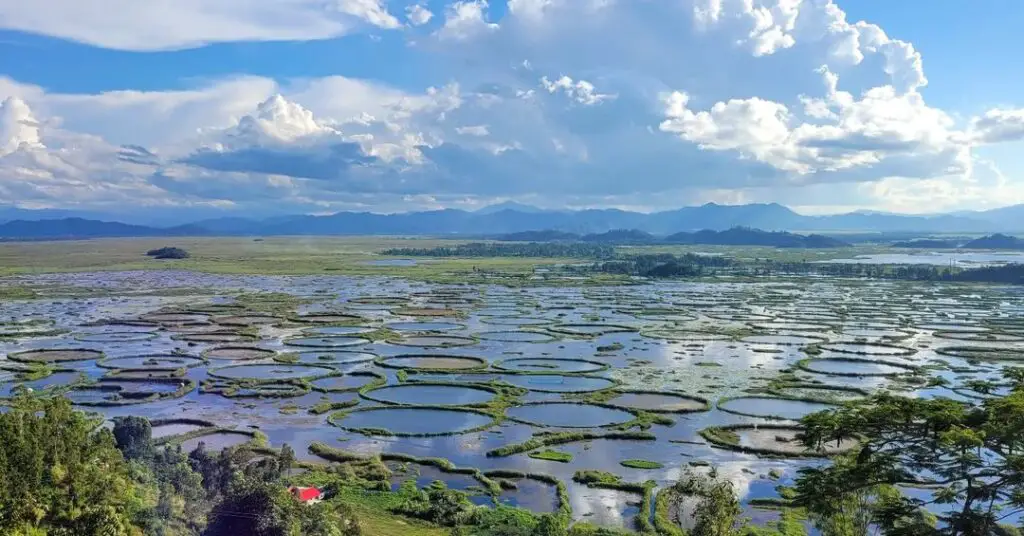
In addition to historical and cultural attractions, Manipur is blessed with scenic landscapes, including picturesque lakes, waterfalls, and hills. The Loktak Lake, also known as the floating lake, is a major tourist attraction that offers boating and bird-watching opportunities.
It is to be noted that an Inner Line Permit (ILP) is required for non-locals to enter and stay in the Indian state of Manipur. The permit can be obtained through the official website of the Manipur Inner Line Permit System, which is designed to regulate and monitor the entry of non-locals into the state. The permit can also be obtained from designated offices in the state, and it is usually issued for 15 days, although it can be extended. The ILP is intended to protect the rights and interests of the local population and to maintain peace and security in the state.
(To know more about Manipur State Tourism check the link here.)
Click here to learn more about popular tourist destinations in Manipur
Conclusion
The Meitei people, with their rich history, language, and cultural traditions, are an integral part of the vibrant tapestry of Indian heritage. It is important to preserve and promote the unique culture of the Manipuri community, ensuring that future generations can continue to appreciate and celebrate their rich heritage.

